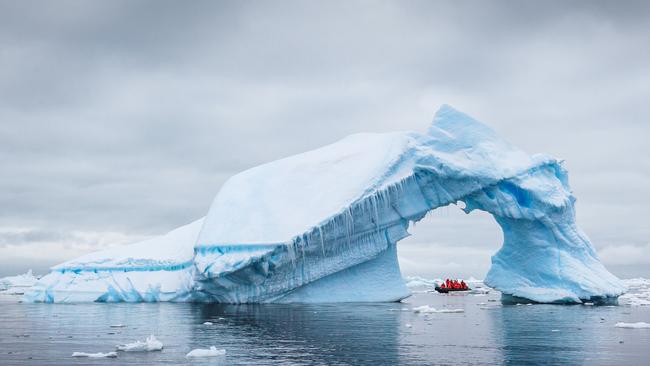Hobart scientists ‘anxiously monitoring’ Antarctica’s diminishing sea-ice
Scientists are raising alarm on the impacts of diminishing sea-ice in Antarctica after breaking a record low for winter. Here’s why.

Tasmania
Don't miss out on the headlines from Tasmania. Followed categories will be added to My News.
Hobart scientists who have spent 2024 “anxiously monitoring” Antarctic sea-ice have been alarmed to learn that for the second winter in a row the extent of ice is “exceptionally below average” – by more than a million square kilometres.
The finding marks a new record low for this time of year.
The past two years have been the warmest on record for the planet with temperature records being broken around the globe.
“Chaotic fluctuations” were evident this winter, said sea-ice researcher Dr Will Hobbs of the Australian Antarctic Program Partnership at the University of Tasmania.
This suggested that the sea-ice system around Antarctica “is shifting to a new state”.
On 7 September, sea ice extent reached 17.0 million square kilometres, a drop from the 17.1 million square kilometres record in the winter of 2023.
The long-term normal for early September is 18.4 million square kilometres.
“At shorter timescales — months to years — the atmosphere is the main driver of regional variability in Antarctic sea ice,” said Dr Hobbs.

“What’s different now is that warmer Southern Ocean temperatures are really having an impact on the sea ice.”
Scientists were now considering whether their observations are a “blip” or related to climate change.
Dr Hobbs said “getting two such extreme events back-to-back is like throwing two double-sixes in a — how many double-sixes do you need before you start thinking the dice is loaded?”
Global temperatures are now 1.5C above pre-industrial records for extended periods of time.
Dr Hobbs said those extended periods of protracted warmth are being reflected in the seas around Antarctica.
“It’s likely a major factor in continuing record low sea ice.”
Dr Phil Reid works for the Bureau of Meteorology (BOM). He said scientists were only just beginning to understand the knock-on effects to weather and climate from historic low sea-ice coverage, “combined with much warmer-than-normal- ocean temperatures.”
“Recent studies suggest that reduced sea-ice extent may lead to an increase in occurrence and duration of summertime wet extremes over Australia, and, conversely, longer periods of dry days during winter.”
Scientists admit there are key characteristics of sea-ice that can’t be measured well – such as thickness, though observations had suggested the sea-ice this year was “quite thin, thinner than average,”
Dr Reid said it was imperative knowledge gaps were filled as the climate continued operating in new and unexpected fashions.




